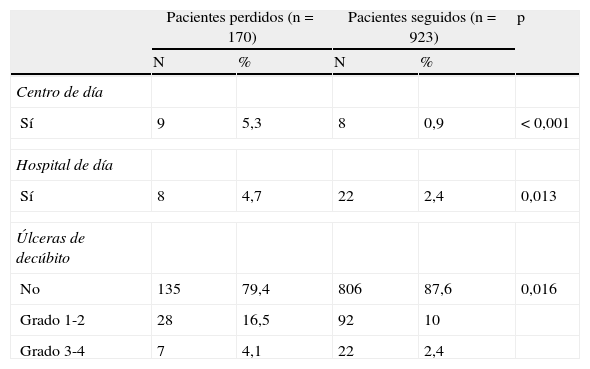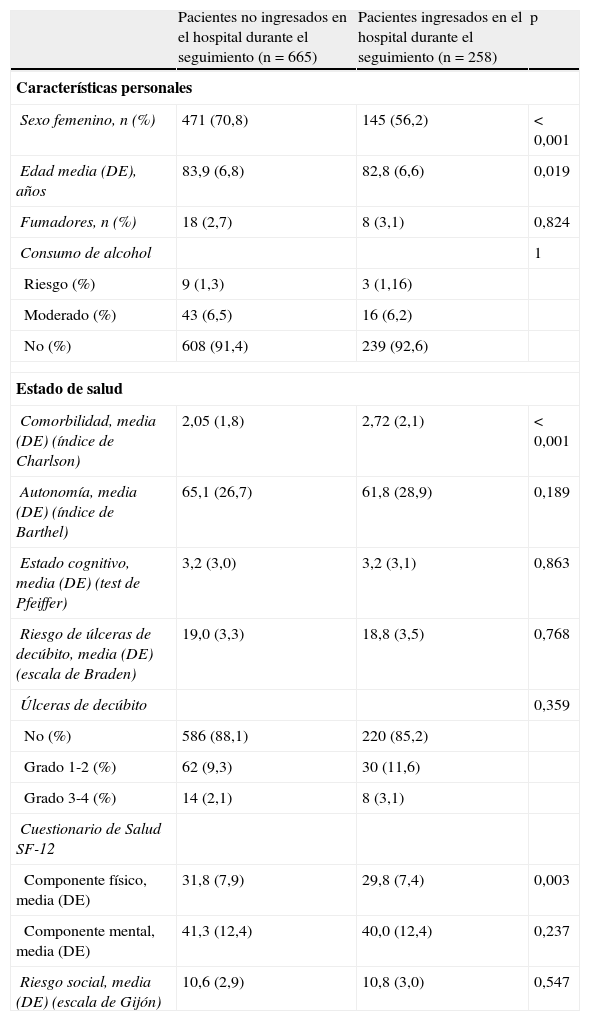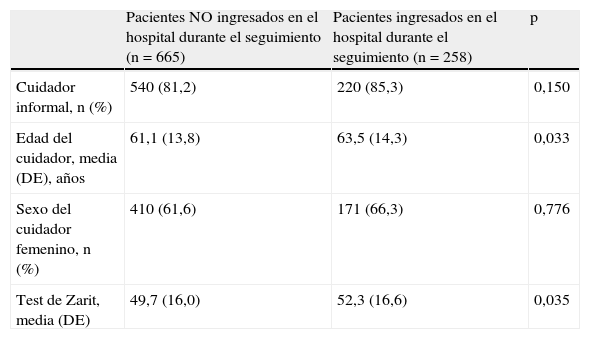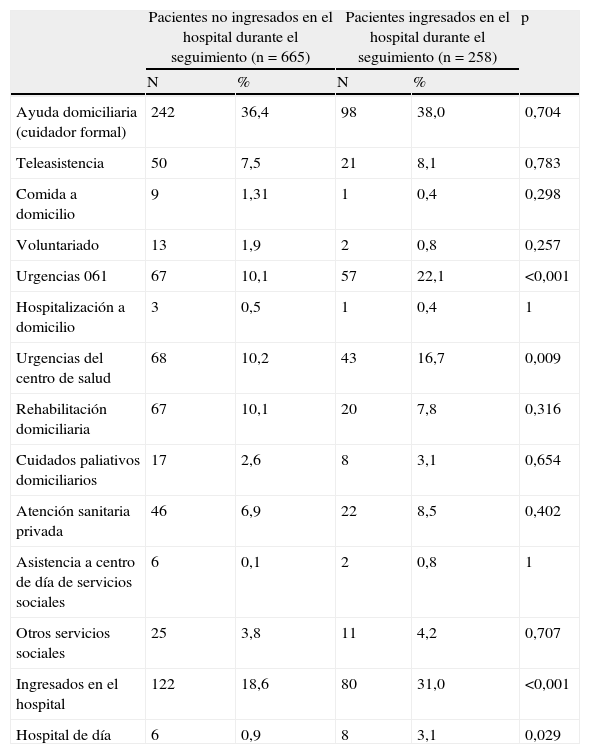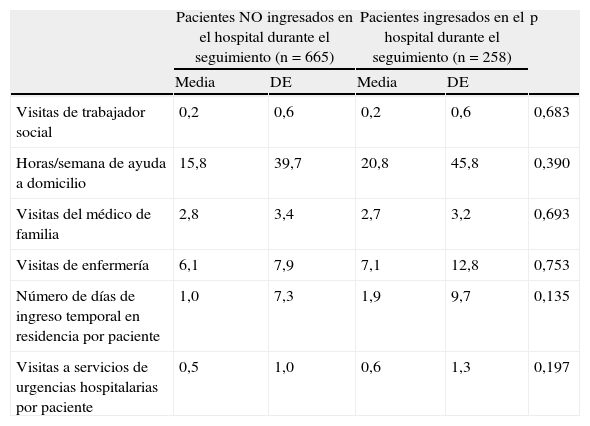Identificar los factores que se asocian a que exista un ingreso hospitalario durante el año siguiente en pacientes ancianos dependientes que viven en su domicilio (ADD), visitados por equipos de atención primaria.
Pacientes y métodoEstudio longitudinal de una cohorte de pacientes ADD incluidos en un programa de atención domiciliaria. En el momento del reclutamiento se realizó una evaluación global (nivel de salud y situación social, cuidados formales e informales recibidos y utilización previa de servicios sanitarios). Durante el año de seguimiento se registraron las visitas a domicilio, así como el uso de servicios sociales, de urgencias y hospitalarios, incluyendo ingresos.
ResultadosSe incluyó un total de 1.093 pacientes. Doscientos cincuenta y ocho pacientes (23,6%) fueron ingresados en el hospital y 170 (15,6%) fueron perdidos durante el seguimiento. Se observó que los pacientes hospitalizados habían recibido el mismo volumen de atención primaria y social domiciliarias que los no hospitalizados. Como factores independientes predictivos de ingreso se encontraron: utilizar las urgencias telefónicas centralizadas (061) (odds ratio [OR] 2,50, intervalo de confianza del 95% [IC 95%] 1,56-4,01) y comorbilidad evaluada por el índice de Charlson al reclutamiento (OR 1,16, IC 95% 1,06-1,27). Por el contrario, el sexo femenino (OR 0,59, IC 95% 0,40-0,85) y una alta valoración subjetiva del estado físico de salud medida por el cuestionario SF-12 (OR 0,97, IC 95% 0,95-0,99), predecían un bajo riesgo de hospitalización.
Conclusiones. Los ingresos hospitalarios de pacientes ADD se relacionan con el sexo, la comorbilidad, el estado de salud subjetiva al reclutamiento y la falta de continuidad en la información y protocolos asistenciales entre niveles asistenciales, más que con la atención sanitaria recibida durante el seguimiento.
The objective is to identify the features associated with next year hospital admissions among elderly dependent patients living at home (EDLH) and visited by primary care teams at their home setting.
Patients and methodLongitudinal cohort study of a sample of EDLH patients admitted to a home care programme delivered by 72 primary care teams. A global health assessment was performed at recruitment in all patients (health and social status, informal and formal carer characteristics and burden of care). We further collected data on visits by primary care personnel and the use of social, emergency and hospital services by EDLH patients throughout one year after recruitment.
ResultsA sample of 1,093 EDLH patients was included. 258 (23,6%) patients were admitted to hospital during follow-up and 170 (15.6%) were lost to follow-up. Hospitalised patients received the same volume of primary care and social care services at home than those that were not hospitalised. Independent predictors of high risk of hospital admission were calling and using the after-hours emergency community services (odds ratio [OR]= 2.50, 95% confidence interval [95% CI] 1.56-4.01) and comorbidity as measured by the Charlson Index (OR= 1.16, 95% CI 1.06-1.27) at recruitment. Similarly, female sex (OR= 0.59, 95% CI 0.40-0.85) and high subjective physical health status scores as measured by the SF12 questionnaire (OR 0.97, 95% CI 0.95-0.99) predicted a low-risk of hospital admission.
ConclusionsHospital admission among EDLH patients is related to comorbidity, gender, subjective health status and the use of uncoordinated emergency services as measured at recruitment, rather than to the use of services during the one-year follow-up.
Artículo
Comprando el artículo el PDF del mismo podrá ser descargado
Precio 19,34 €
Comprar ahora






